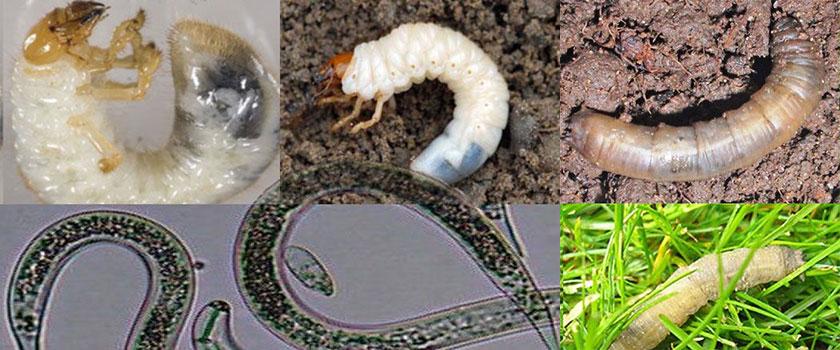NEMASYS - BIOLOGICAL SOLUTIONS FOR CHAFER GRUBS AND LEATHERJACKET CONTROL
With increasing changes to legislation around the use of chemical control for tackling problems such as leatherjackets and chafer grubs, there has been an increased use of biological control agents as part of many pest control programmes.
Nemasys G and Nemasys J both contain beneficial nematodes which are effective biological control agents that are safe to both users and the environment. These nematodes provide control by entering the larvae which stops them from feeding within three days of infection. After this point the larvae die within 10-14 days. After the host larvae has died, the nematodes then enter the soil again searching for a new host resulting in the pest control continuing naturally.
NEMASYS J
Nemasys J contains the beneficial nematode Steinernema feltiae which is used in the control of leatherjacket larvae. Leatherjackets are the larvae of crane flies which are also known as daddy long legs. Crane flies can complete two generations per year with one flight in August/September and another in May/June. Eggs are laid in late August and hatch within two weeks. Once the larvae have hatched they begin feeding immediately.
The aim of this product is to target the young leatherjacket larvae that are feeding close to the soil surface. Nemasys J should be applied and watered into the turf around a week after the daddy long legs have been seen. The suggested time to apply these nematodes is from August to September when the soil is around 12° C.
This product is perfect for use on lawns, golf courses, amenity and outfield turf and amenity grassland.
NEMASYS G
Nemasys G is used for the control of chafer grubs. This product contains the beneficial nematode Heterorhabditis bacteriophora which targets the chafer grub larvae. The garden chafer occurs in large numbers and causes enormous amounts of damage due to the grubs feeding on grass roots. Alongside feeding on grass roots they can also feed on a variety of trees and shrubs causing damage to fruit trees and nursery stock. Generally chafer grubs are more common in warmer and wetter regions such as South West England. Alongside the chafer grubs causing damage, these grubs are a desired food for birds, badgers and foxes who tear up the turf to find the grubs.
Like Nemasys J, Nemasys G targets the young chafer grubs feeding close to the soil when the soil is around 12°C. This is the optimal time to treat the chafer grubs as around early October when the weather starts getting cooler they move deeper into the soil which would make it much harder for the nematodes to find and infect the pests.
To find out more about how to control leatherjackets and chafer grubs, check out our “Dealing with insects and pests” by problem pages and select the pest you are wanting to control.





